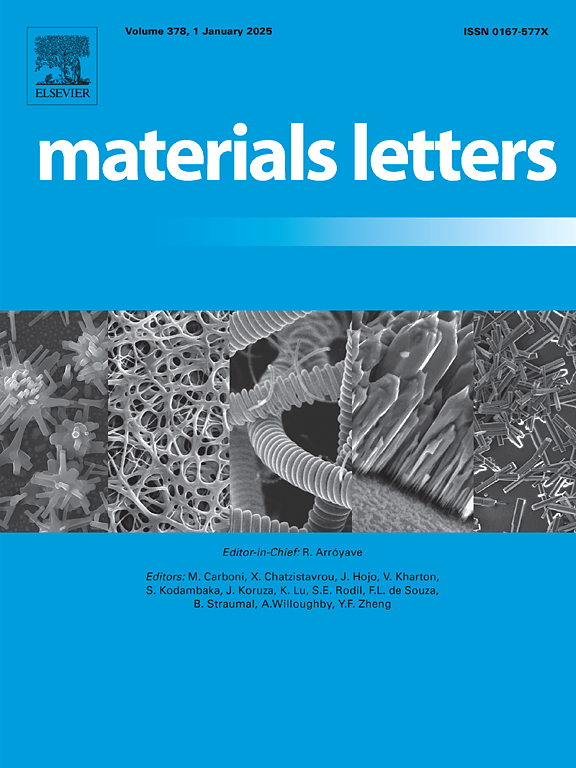Production of chitosan from Agaricus bisporus and its application in the removal of Pb (II) and Cd (II) ions
IF 2.7
4区 材料科学
Q3 MATERIALS SCIENCE, MULTIDISCIPLINARY
引用次数: 0
Abstract
The contamination of water systems by heavy metals such as lead and cadmium represents serious environmental and health concern, requiring efficient, low-cost, and eco-friendly treatment alternatives. Chitosan, a biopolymer obtained from chitin, is a promising adsorbent due to its chemical functionality and biodegradability. In this work, chitosan was extracted from Agaricus bisporus stipes through oxidative and alkaline treatment, and its structure was confirmed by SEM and FTIR analyses. SEM images revealed a lamellar–fibrillar surface favorable for adsorption, while FTIR spectra indicated the successful deacetylation of chitin to chitosan. Biosorption experiments were performed to evaluate the removal efficiency of Pb (II) and Cd (II) under different parameters: pH (4–8), initial ion concentration (Pb: 20 ppm, Cd: 2 ppm), and contact time (0−12h). Results demonstrated that Pb (II) adsorption reached more than 88 % at pH 4, whereas Cd (II) removal was higher under alkaline conditions (≈77 % at pH 8), evidencing the strong influence of solution pH. These results highlight the potential of mushroom-derived chitosan for sustainable wastewater treatment technologies.
双孢蘑菇壳聚糖的制备及其在去除Pb (II)和Cd (II)离子中的应用
铅和镉等重金属对水系统的污染是严重的环境和健康问题,需要高效、低成本和生态友好的处理方法。壳聚糖是一种从几丁质中提取的生物聚合物,由于其化学功能和生物降解性,是一种很有前途的吸附剂。以双孢蘑菇为原料,经氧化和碱性处理提取壳聚糖,并通过扫描电镜和红外光谱分析对壳聚糖的结构进行了表征。扫描电镜显示了有利于吸附的层状纤维表面,红外光谱显示甲壳素成功脱乙酰为壳聚糖。在pH(4 ~ 8)、初始离子浓度(Pb: 20 ppm、Cd: 2 ppm)和接触时间(0 ~ 12h)不同条件下,进行了生物吸附实验,考察了Pb (II)和Cd (II)的去除效果。结果表明,pH为4时,壳聚糖对Pb (II)的吸附性可达88%以上,而pH为8时,对Cd (II)的吸附性可达77%以上,表明溶液pH对壳聚糖的去除率有较大影响。
本文章由计算机程序翻译,如有差异,请以英文原文为准。
求助全文
约1分钟内获得全文
求助全文
来源期刊

Materials Letters
工程技术-材料科学:综合
CiteScore
5.60
自引率
3.30%
发文量
1948
审稿时长
50 days
期刊介绍:
Materials Letters has an open access mirror journal Materials Letters: X, sharing the same aims and scope, editorial team, submission system and rigorous peer review.
Materials Letters is dedicated to publishing novel, cutting edge reports of broad interest to the materials community. The journal provides a forum for materials scientists and engineers, physicists, and chemists to rapidly communicate on the most important topics in the field of materials.
Contributions include, but are not limited to, a variety of topics such as:
• Materials - Metals and alloys, amorphous solids, ceramics, composites, polymers, semiconductors
• Applications - Structural, opto-electronic, magnetic, medical, MEMS, sensors, smart
• Characterization - Analytical, microscopy, scanning probes, nanoscopic, optical, electrical, magnetic, acoustic, spectroscopic, diffraction
• Novel Materials - Micro and nanostructures (nanowires, nanotubes, nanoparticles), nanocomposites, thin films, superlattices, quantum dots.
• Processing - Crystal growth, thin film processing, sol-gel processing, mechanical processing, assembly, nanocrystalline processing.
• Properties - Mechanical, magnetic, optical, electrical, ferroelectric, thermal, interfacial, transport, thermodynamic
• Synthesis - Quenching, solid state, solidification, solution synthesis, vapor deposition, high pressure, explosive
 求助内容:
求助内容: 应助结果提醒方式:
应助结果提醒方式:


